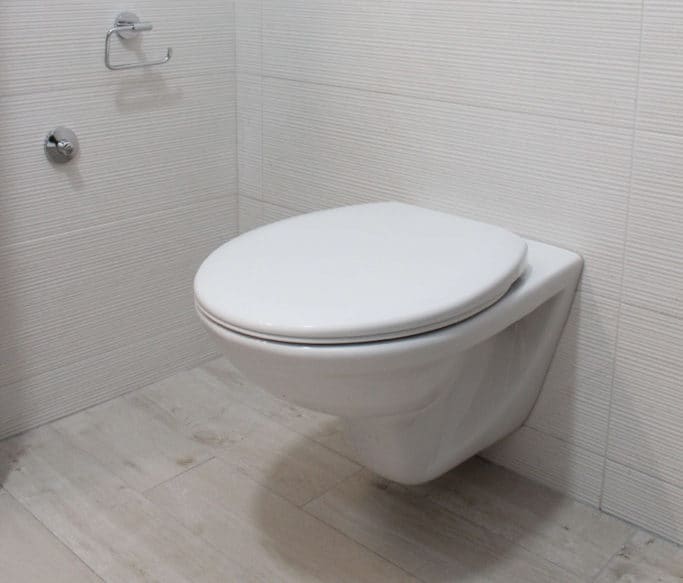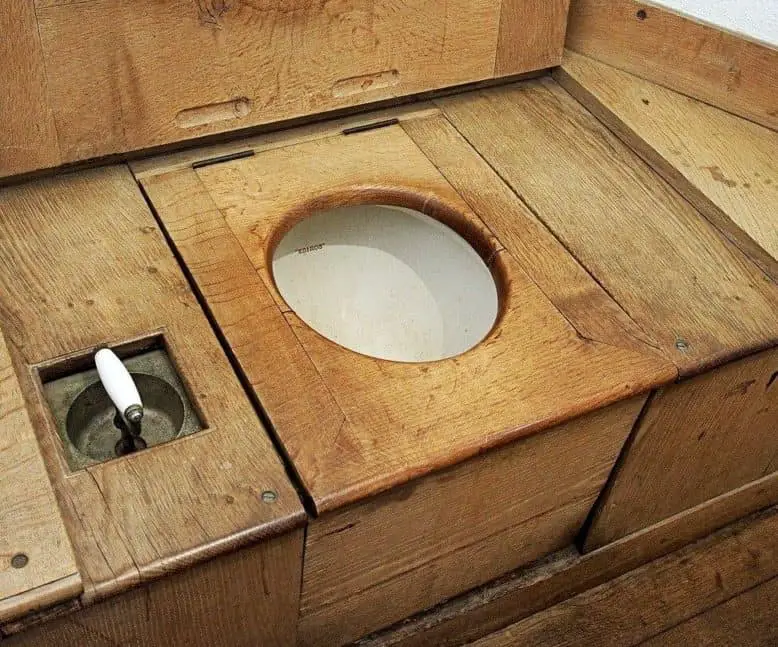
Toilet seats don’t come with expiration dates, and it’s really tough to find clear information on when to replace them. But don’t worry, if you want to know how long toilet seats last, then here’s the short answer:
Toilet seats will generally last for 5 or more years. Exactly how long a specific toilet seat will last depends on a number of factors, including the material the toilet seat is made from, the quality of the hardware, and the amount of use it receives.
This rule of thumb should give you a good start point, and then you can get more specific by considering the additional factors listed below.
Table of Contents
How Long Do Toilet Seats Last?
As I mentioned above, you can usually expect a toilet seat to last for 5 years or more. However, there are several factors that can make it last longer (or not as long).
In particular, the following 5 points will have a big impact on the lifespan of your toilet seat:
- Materials
- Hardware
- Amount of Use
- Environment
- Accidents
Let’s dig into each of these in more detail, starting with materials.
1. Materials
How long a toilet seat will last depends a lot on the material it’s made out of. There are MANY different types of materials that are used to make toilets, but we can break them down into 3 rough categories:
1.1 Plastic

Plastic is probably the most common material that’s used to make toilet seats today. You may know that, but you probably don’t know that there are several different types of plastic used to make toilet seats.
I’ll mention some of the plastic types below but first, it’s important to mention that plastic toilet seats will usually last longer than wood or any of the other options. With that said, there are a few interesting variations within the plastic category.
For example, the thin flimsy toilet seats you might find in a cheap apartment when you move-in are probably made out of polypropylene. Polypropylene toilet seats are pretty durable, but they are known to turn yellow over time.
I had an apartment a few years ago that had a plastic toilet seat with a huge orange/yellow stain on it. It looked like something fiery had melted a divet right into the plastic!
There are also toilet seats made out of Duroplast, which is a really durable material. The bad news with Duroplast is that it’s really difficult to break down, so it’s not very good for the environment.
Finally, I’ll also mention resin toilet seats. If you’ve ever seen a toilet seat that is transparent or has designs embedded on the inside, then you’ve seen a resin toilet seat. Now let’s move on to wooden toilet seats.
1.2 Wood

Wooden toilet seats usually do not last as long as plastic toilet seats, because they are more prone to cracking, rot, and worn finish. With that said, some types of toilet seats are more durable than others.
Most wooden toilet seats sold today are actually made of compressed wood materials. This kind of toilet seat is often painted white, so it might be hard to distinguish it from plastic toilet seats. However, the wooden seats tend to be heavier, so you may be able to tell the difference by comparing the weight.
These compressed wood seats are less likely to crack than traditional solid-wood toilet seats. And if the compressed wood is painted (instead of coated with varnish), then the finish will probably also last longer.
With that said, I think it’s worth re-stating that any type of wooden seat will usually not last as long as a good plastic seat. However, there are two big reasons why some people prefer to use wooden seats for their toilets:
First, wood materials don’t get as cold as plastic. So if you live someplace that gets really cold winters (like I do), then you might enjoy a wooden toilet seat. Second, toilet seats with a natural wood finish can have a much nicer appearance compared to the bland white of your typical plastic toilet seat.
1.3 Padded (e.g. Foam)
Last, I wanted to briefly cover padded (also called cushioned) toilet seats. Padded toilet seats usually do not last as long as plastic or wood seats.
The reason for this is that the outer plastic tends to crack. When this happens on a padded toilet seat, it needs to be replaced. Otherwise, it’s going to start causing problems for you.
For example, padded toilet seats with cracks in the plastic have been known to pinch people in the butt. Nobody wants that!
In addition, the cracks in a padded toilet seat are difficult (read: impossible) to clean, and so it also becomes a hiding place for nasty bacteria.
Now that we’ve covered materials, let’s jump into hardware.
2. Hardware
This one is much more straightforward than materials, so we’ll keep it brief.
When we talk about toilet seat hardware, we’re fundamentally talking about 2 things:
- The hinges and bolts that attach the seat to the bowl
- Any accessories or special features
If you buy a cheap toilet seat, you’ll probably end up with really cheap plastic hinges/bolts to attach to your toilet. Low-quality hinge hardware will often be the first thing that needs replaced on a toilet seat and can reduce its overall lifespan.
There are also a variety of special features and add-ons that a toilet seat may have. For example, you might get a “soft close” toilet seat, or a “toddler” toilet seat that comes with a smaller secondary seat.
Generally speaking, the more special features you add, the more it reduces the overall lifespan of the toilet seat. This will not be true in every case, but more moving pieces usually means it won’t last as long.
3. Amount of Use
Imagine you have 2 identical toilet seats. One of them is regularly used by a family of 5, and the other one is only used every couple of months by visitors. Which of these seats do you think will last the longest?
You get the idea. The more a particular toilet seat is used, the sooner it will wear out.
4. Environment
This may play more or less of a role depending on where this toilet is located. But let’s cover a couple of examples of how environmental conditions can cause faster wear on a toilet seat.
Extreme temperatures have the potential to damage any type of toilet seat. Flooding or very humid weather could damage a toilet seat, wooden ones especially.
Finally, I think it’s also important to consider the possibility of accidents.
5. Accidents
When I say accidents, what I mean is something sudden that will break or damage your toilet seat.
For example, if you drop something heavy and it lands on your toilet seat, it might crack it in half. Or if your toilet seat keeps falling down, that could also potentially cause problems.
This one probably goes without saying, but I thought it was worth mentioning because something like this could take a perfectly good toilet seat and reduce its lifespan to zero.
When to Replace Your Toilet Seat
Now that we’ve covered the various factors that influence a toilet seat’s lifespan, let’s briefly cover when you should replace yours.
Here are 7 cases when you might want to replace your toilet seat:
- The toilet seat is broken/cracked
- The toilet seat is stained
- The paint or finish is worn off
- The hardware or hinges are broken
- The color or design is outdated/ugly
- The toilet seat is uncomfortable
- You just don’t like it!
At the end of the day, toilet seats are cheap and easy to replace. If your old one is getting on your nerves for any reason, then you should probably just go ahead and replace it.
Related Questions
How Often Do You Need to Replace a Toilet?
A standard porcelain toilet will last 15-30 years, and if well-maintained, toilets can last up to 50 years. The average life expectancy of a toilet varies based on factors such as the quality of the toilet and its parts, toilet usage, and water quality.
Why Should You Keep the Toilet Lid Down?
You should keep the toilet lid down when flushing because it prevents bacteria from being released into the air. Open toilets can also be a safety hazard for children and pets. In addition, it is generally considered more polite to leave the lid down, especially when visiting someone else’s home.
